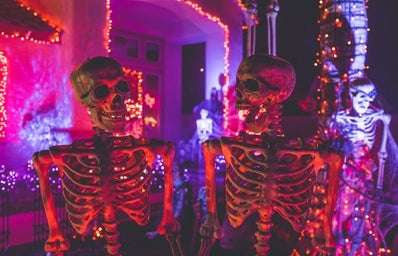When celebrating one of the most important holidays in Latin American culture, Dia de Los Muertos, often you will find a beautifully decorated skeleton woman covered in long dresses, flowers, and hats with bright colors to be the iconic staple face of the holiday.
Dia De Los Muertos, also known as the Day of the Dead, is a Hispanic celebration that takes place on November 1st and celebrates all life that has passed on. It combines ancient Aztec and Mesoamerican traditions as well as influences from the Catholic Church, which celebrates All Souls Day on the same day. All to properly celebrate the passing of loved ones and their journey in the afterlife.
A big part of this iconic holiday is to create “ofrendas” which are altars dedicated to the people who have passed away. They are decorated with their photos, their favorite foods, flowers, and anything else they love to assist their journey after death.
One of the most iconic art pieces people can recognize immediately related to this celebration is the iconic La Catrina or “the sugar skull.”
Originating from Mesoamerican roots, La Catrina is a beautiful drawing of a skeleton woman decorated in beautiful clothing for a Mexican pressing company in 1910 by Jose Guadalupe Posada. He was a Mexican artist born on February 2nd, 1852. He is one of the most influential artists in Mexican history, well-known for his lithography, engraving, and cartoons.
La Catrina was originally done as a satirical piece in the newspaper cartoon section that ridiculed the high-class societies of Mexico and their obsession with European culture. She represents the cycle of life and death, and the truth that in the end our status doesn’t matter, we all die.
The sugar skull became the central forefront of the holiday and inspired a new tradition that in modern times can be recognized through costumes, desserts, and makeup.
Sources:
https://www.posada-art-foundation.com/about-posada
https://daily.jstor.org/what-do-sugar-skulls-mean-on-el-dia-de-los-muertos/


